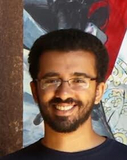BibTeX
@inproceedings{Losch_ICLR24,
TITLE = {On Adversarial Training without Perturbing all Examples},
AUTHOR = {Losch, Max and Omran, Mohamed and Stutz, David and Fritz, Mario and Schiele, Bernt},
LANGUAGE = {eng},
URL = {https://openreview.net/forum?id=pE6gWrASQm; https://openreview.net/group?id=ICLR.cc/2024},
PUBLISHER = {OpenReview.net},
YEAR = {2024},
MARGINALMARK = {$\bullet$},
DATE = {2024},
BOOKTITLE = {The Twelfth International Conference on Learning Representations (ICLR 2024)},
PAGES = {1--21},
ADDRESS = {Vienna, Austria},
}Endnote
%0 Conference Proceedings %A Losch, Max %A Omran, Mohamed %A Stutz, David %A Fritz, Mario %A Schiele, Bernt %+ Computer Vision and Machine Learning, MPI for Informatics, Max Planck Society Computer Vision and Machine Learning, MPI for Informatics, Max Planck Society Computer Vision and Machine Learning, MPI for Informatics, Max Planck Society External Organizations Computer Vision and Machine Learning, MPI for Informatics, Max Planck Society %T On Adversarial Training without Perturbing all Examples : %G eng %U http://hdl.handle.net/21.11116/0000-0010-445B-C %U https://openreview.net/forum?id=pE6gWrASQm %D 2024 %B Twelfth International Conference on Learning Representations %Z date of event: 2024-05-07 - 2024-05-11 %C Vienna, Austria %B The Twelfth International Conference on Learning Representations %P 1 - 21 %I OpenReview.net

